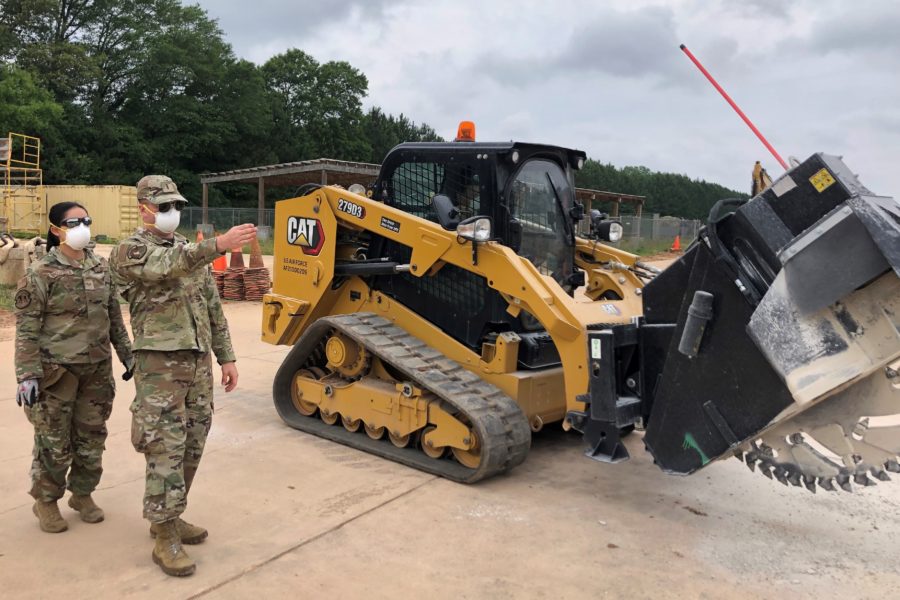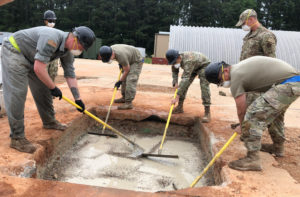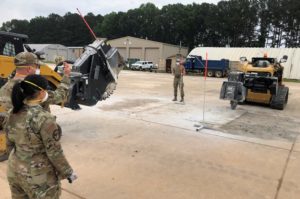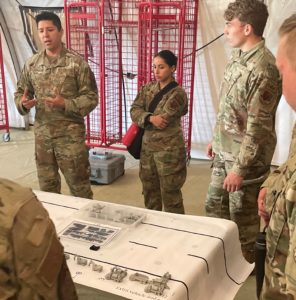Seeking to make life harder for a potential adversary like China, the Air Force wants more airfields in more locations, giving the service more freedom to operate in combat.
But runways serve little purpose if they are damaged beyond use. The Air Force recently conducted a “beta test” to figure out if Airmen without previous specialized training could repair them quickly.
“The concept of a cross-section of Airmen carrying out important wartime tasks seems like a good idea, but does it work?” the Air Force Installation and Training Support Center wrote in a press release.
So the service sought to find out, sending 25 Airmen from Mountain Home Air Force Base, Idaho, to a training site at Dobbins Air Reserve Base, Ga. to participate in an exercise May 22-24.
The Air Force has introduced the concepts of Agile Combat Employment, operating more flexibly with a smaller fixed footprint, and Multi-Capable Airmen, asking service members to perform more tasks to support those operations. The service plans to invest billions in building out infrastructure at more bases and building aircraft shelters in the Indo-Pacific, many within the likely range of Chinese missiles. It will need to ensure those facilities can recover and get back up and running as needed.
“In a deployed location, we might not be able to rely solely on civil engineers,” Master Sgt. Broc French, a training program manager with Air Force Civil Engineer Center, said in the release.
Five of the Mountain Home Airmen from the 366th Civil Engineer Squadron attended a preparation course last year. Once at Dobbins, they walked the other members of their team through the basics of rapid runway repair for two days, according to the service.
In the end, the civil engineers, along with finance, maintenance, munitions, medical, and operations support Airmen had to complete six concrete crater repairs and other runway damage operations within four hours.
“I was super nervous to come in here and start cutting concrete after two days,” said Senior Airman Kayla Panzarella, a medic at Mountain Home.
“I can’t explain the feeling of doing this wartime task, this mission,” she added. “I remember looking out from inside [of the heavy equipment] and having the feeling of, ‘Wow, we’re doing this.'”
And according to the Air Force, they did it well.
“After two days, they’ve been able to fill craters and, if it were a real-world scenario, be able to get aircraft off the ground quickly,” French said in the release. “This is a great concept that works, and we’re looking to expand it in the future.”
If the Multi-Capable Airmen concept is to succeed, more service members who are traditionally far away from the flight line will have to get their hands dirty.
“If you could take different career fields like security forces, medical, and finance like we had out here, you could put people together” in groups that can conduct complex procedures like runway repair, Master Sgt. Patrick Murphy, the instructor lead for the exercise said. “With that, you could take care of everything with a small force, as long as you had the right attitude like we had with folks this week.”



